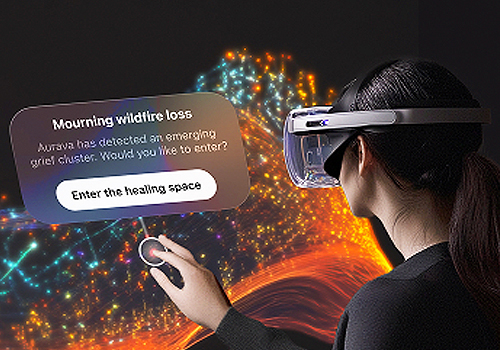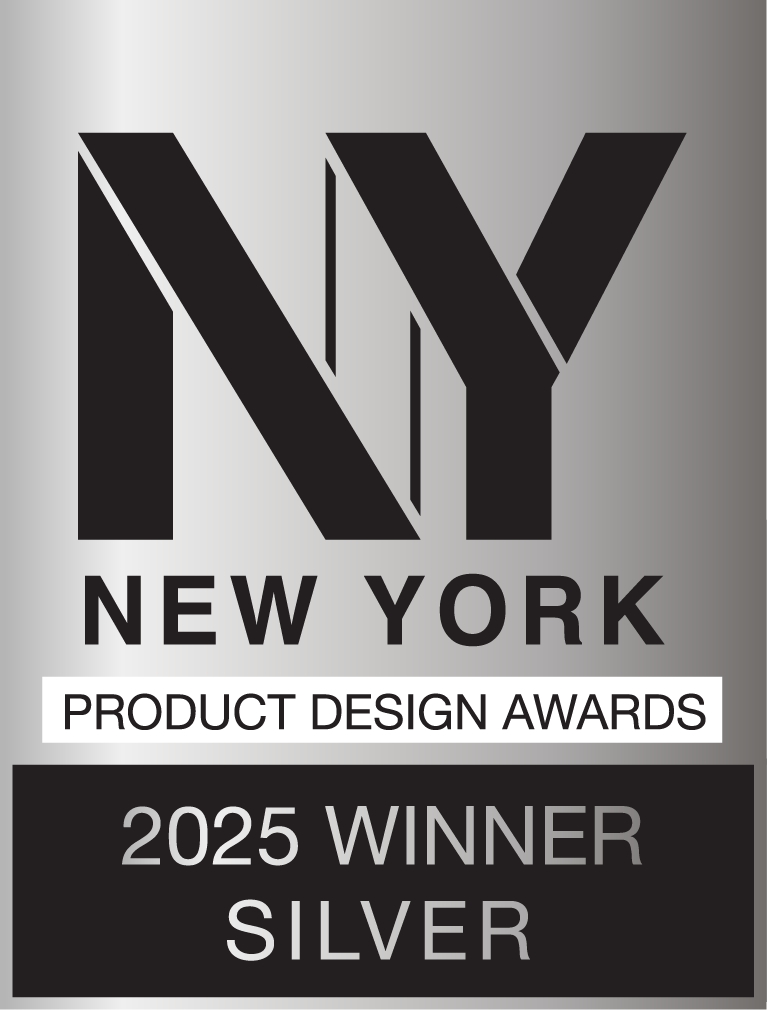
Zhixian Xu
1. Congratulations on winning the NY Product Design Awards! Can you introduce yourself and share about what inspired you to pursue design as a career?
I’m a UX designer specializing in telehealth, with a strong focus on improving the experience and efficiency of healthcare providers. My journey into design was sparked by an early fascination with the way systems shape human behavior—how the smallest interaction can influence a decision, a feeling, or even a life.
Over time, I became deeply interested in the healthcare space, not only because of its complexity, but also because of its urgency. I realized how much outdated workflows, fragmented tools, and emotional fatigue impact clinicians and patients alike. That’s what continues to drive me: the belief that thoughtful design can become a form of care—helping to reduce friction, amplify clarity, and ultimately bring humanity back into healthcare systems.
Design, to me, is never just about aesthetics or usability—it's about responsibility, and having the tools to change how people experience moments that really matter.
2. What does being recognized in the NY Product Design Awards mean to you?
Winning in the NY Product Design Awards is incredibly meaningful to me—not just as a recognition of the work itself, but as an affirmation of why the work matters. The award’s focus on thoughtful, future-facing design aligns deeply with what I hope to contribute as a designer: building systems that not only function well, but resonate with real human needs.
To have a speculative healthcare / social-cultural design concept like Aurava recognized on this stage tells me that design can still ask difficult questions, challenge assumptions, and hold space for emotional complexity—especially in fields like grief, healing, and collective trauma.
It’s also a reminder that behind every interface is a person, and behind every problem is a system we have the power to improve. This award gives me the momentum to keep designing in ways that are both bold and grounded.
3. How has this achievement impacted your career, team, or agency, and what opportunities has it brought so far?
The award has brought more visibility to my work in speculative and healthcare design, which has opened up new conversations with collaborators, researchers, and even people outside the traditional design community.
Since Aurava deals with themes like grief, memory, and collective healing, the recognition also gave the project a kind of validation—that emotional experiences are worth designing for, and that systems supporting them can be just as critical as tools for diagnosis or treatment.
Personally, it pushed me to think more seriously about how to carry ideas like this forward—not just as one-off concept pieces, but as part of a longer design journey. It’s made me more intentional about bridging experimentation and impact.
4. What role does experimentation play in your creative process? Can you share an example?
Experimentation is core to how I work—especially when the goal is to design for things that don’t have clear precedents. With Aurava, I had to explore how grief might be translated into spatial experiences, AR interactions, and even ritual gestures. That meant stepping beyond typical UX flows and experimenting with symbolism, ceremony, and data visualization as forms of emotional communication.
One example: I used a real-time "grief heatmap" to reflect collective emotional intensity, which meant designing an interface that didn’t just show information, but felt alive. That required combining speculative UI thinking with emotional pattern modeling—something that isn’t standard in most product design toolkits.
These kinds of experiments help me push past conventional frames of “what design should do” and into the question of “what design could hold space for.”
5. What's the most unusual source of inspiration you've ever drawn from for a project?
During the early stages of the COVID-19 pandemic, I started noticing something quietly powerful: when prominent figures—especially healthcare workers—passed away, people would spontaneously gather online to share stories, leave messages, or even hold digital memorials.
We were physically isolated, but emotionally bound together by a shared trauma. In that moment, I saw a strange contradiction: people grieving collectively, yet alone—mediated by screens, scrolls, and silence.
That experience stayed with me. It made me wonder: what could collective grief look like in an age shaped by intelligent systems and virtual spaces? Could we design environments that support emotional presence, even in absence?
That was the seed of Aurava. The project is my attempt to explore whether mourning—often seen as private—could become a shared, healing experience in digital form.
6. What’s one thing you wish more people understood about the design process?
I wish more people understood that not all design problems can—or should—be simplified. Especially in healthcare, the design process often isn’t about making things “easier,” but about helping people navigate complexity with clarity and care.
In my work on telehealth platforms, I’ve learned that a single screen often has to serve multiple user groups—clinicians, nurses, administrators—each with different priorities, time constraints, and cognitive loads. What might seem like a straightforward form redesign could actually require negotiating with legal regulations, integrating with outdated EHR systems, and protecting sensitive patient data—all at once.
Good design, in these cases, isn’t about control. It’s about holding tension: between efficiency and empathy, between urgency and stability, between what the system needs and what the human needs. That’s the part of the process I find most meaningful—and most misunderstood.
7. How do you navigate the balance between meeting client expectations and staying true to your ideas?
Balancing client expectations with design integrity often comes down to understanding the “why” behind each request. In healthcare projects especially, stakeholders may push for quick solutions—faster interfaces, more automation, fewer steps. But when you dig deeper, their real concerns often stem from emotional fatigue, liability, or systemic inefficiencies.
I try to meet them where they are, then slowly expand the conversation. Rather than pushing back with abstract ideals, I use research, early prototyping, or storytelling to show how a more thoughtful approach can meet their goals—and support the humans using the system.
Sometimes that means compromising on aesthetics or timelines. But it never means compromising on the clarity, dignity, or emotional resonance of the experience. That’s the line I try to hold, even in high-pressure environments.
8. What were the challenges you faced while working on your award-winning design, and how did you overcome them?
One of the biggest challenges in designing Aurava was that it didn’t follow a traditional problem-solution model. I wasn’t just creating a tool—I was trying to design a space for grief, memory, and collective healing, all of which are deeply personal, emotional, and culturally variable.
There was no clear benchmark for what a “grief interface” should look like. I had to move beyond standard UX patterns and instead draw from speculative design, cultural rituals, and emotional symbolism. At every step, I had to ask myself: what emotions should be visualized? What gestures could feel meaningful but not prescriptive? How do I honor grief without oversimplifying it?
Rather than forcing clarity, I learned to design for ambiguity—to create an adaptive, respectful, and emotionally resonant experience. That shift in mindset became one of the most valuable lessons I’ve carried into other projects.
9. How do you recharge your creativity when you hit a creative block?
When I hit a creative block, I don’t try to force a breakthrough. I’ve learned that stepping away is often more productive than pushing through. Sometimes that means going for a long walk, reading something completely unrelated, or even watching a slow film that gives me space to feel, not just think.
Other times, I revisit old notebooks or sketches—things I once abandoned—that suddenly make sense in a new context. I also keep a personal habit of writing loosely about ideas I’m stuck on, without judgment or structure.
For me, recharging creativity isn’t about stimulation—it’s about reconnecting with curiosity. When I stop needing to “figure it out,” the idea usually finds its way back to me.
10. What personal values or experiences do you infuse into your designs?
I often find myself designing for people who are carrying invisible weight—grief, fatigue, uncertainty. Whether it’s a clinician overwhelmed by systemic inefficiencies, or someone mourning in silence after a collective trauma, I try to create experiences that acknowledge emotional complexity instead of flattening it.
I’m drawn to design as a form of care—not just through usability, but through presence, dignity, and cultural sensitivity. I believe design has a role in helping people feel seen, even in systems that aren’t always built for empathy.
That value comes from my own experience of watching how people navigate hardship—not through grand solutions, but through quiet resilience, symbolic rituals, and connection. Those moments stay with me. They remind me that sometimes, the most powerful thing design can do is to create room for emotional truth.
11. What is an advice that you would you give to aspiring designers aiming for success?
Don’t rush to be original. Instead, spend time learning how to listen—really listen—to what people don’t say. What they tolerate. What exhausts them. What makes them feel unseen. That’s where the real design work often begins.
Also, don’t be afraid of ambiguity. Some of the most meaningful problems can’t be solved in one sprint or one screen. Learn to sit with complexity, and to ask better questions—not just for the client, but for yourself.
And most importantly: don’t forget that design is never just about systems. It’s about the people who move through them.
12. If you could collaborate with any designer, past or present, who would it be and why?
If I could collaborate with anyone, it would be Neri Oxman. Her ability to blur boundaries between science, art, technology, and biology is something I find endlessly inspiring.
What I admire most is how she doesn’t just “design things,” but designs entire ecosystems—systems that grow, adapt, and respond to their environments. That mindset aligns deeply with how I approach emotionally complex spaces, like grief or healthcare.
Working with someone who sees the world in systems of care, not just systems of control, would be a dream collaboration for me.
13. What's one question you wish people would ask you about your work, and what's your answer?
I wish people would ask:
“Who gets left out when we define ‘the user’ too narrowly?”
Because so many design processes are optimized for the visible, the vocal, the measurable. But the quiet users, the invisible edge cases, the people whose experiences don’t fit neatly into categories—they’re often the ones most affected by systemic decisions.
I think good design is not just about solving problems for the majority. It’s about noticing who’s missing from the room, and asking why they never felt invited in the first place.

